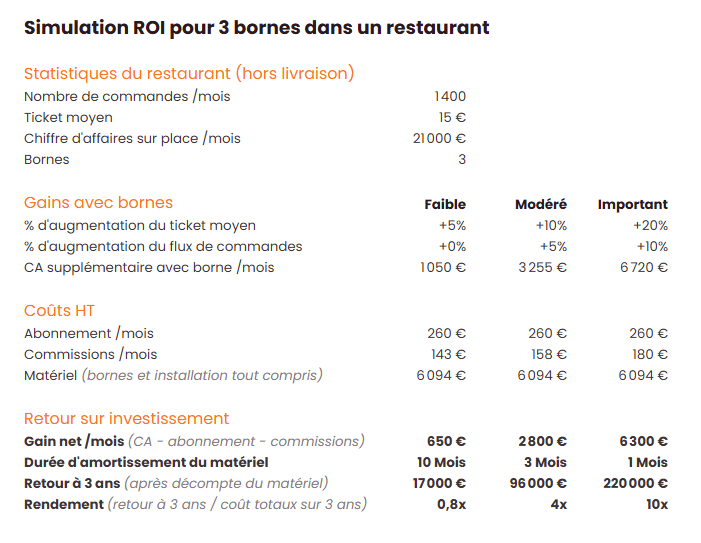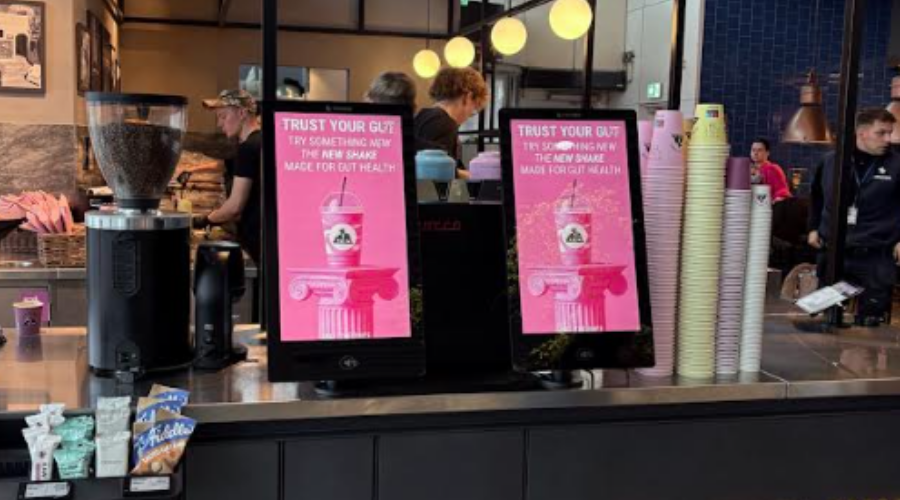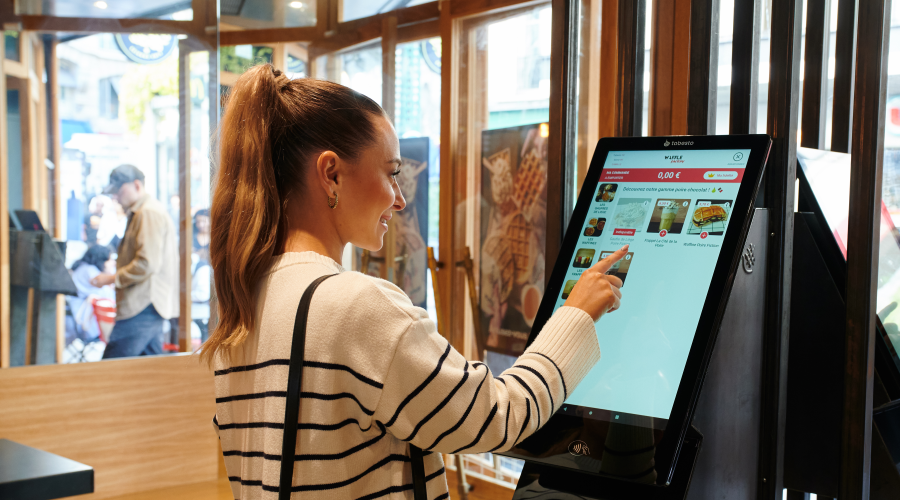What Is the ROI of a Self-Order Kiosk
Tabesto self-order kiosks are an effective way to generate additional revenue effortlessly, and better yet, they pay for themselves in just a few months. Let’s look at how, with real figures to back it up.

It is often said that kiosks pay for themselves quickly — and that’s true, as long as they are efficient and provide an optimal customer journey.
To keep things concrete, we’ll focus here on what we know best: Tabesto kiosks and the results achieved by our clients.
In most cases, Tabesto kiosks are fully paid off within three to ten months and can generate between one to ten times their cost within three years.
Here’s what that looks like in real numbers.
The ROI of a Self-Order Kiosk: Three Typical Scenarios
Kiosks impact your sales through two main levers:
- Average ticket increase: +10% to +30%, depending on how effectively upselling is done at the counter.
- In-store order volume increase: 0% to +20%, depending on how many customers are currently lost during peak hours.
These gains depend on several factors (detailed later) and directly affect your return on investment.
Here’s what ROI you can expect from installing kiosks in one location, across three scenarios — low, medium, and high impact — for a restaurant processing 1,400 dine-in orders per month with an average ticket of €15 before installing kiosks.
Keep in mind that the key takeaway is the general order of magnitude — exact results vary by restaurant.

- Conservative scenario (+5% ticket increase, no added traffic): kiosks pay for themselves in ten months and generate €17,000 in additional revenue over three years, after deducting equipment, subscription, and commission costs.
- Moderate scenario (+10% ticket, +5% traffic): payback in three months and €96,000 additional revenue over three years, also net of all costs.
- High-impact scenario (high traffic and strong upselling): ROI can exceed €200,000 in three years, with kiosks paid off within the first month.
In short, every month without kiosks represents a significant loss in revenue and profitability for your restaurant.
How to Estimate Your Kiosk ROI in Three Steps
Whether you already have a quote or not, here’s how to estimate your return on investment by including all costs and potential gains.
1. Estimate the Costs
A kiosk comes with two types of costs:
- Hardware: around 2,500€ for the first kiosk (hardware, setup, and installation), then €2,000 for each additional unit.
- Recurring yearly costs: 1,300€ per kiosk per year (subscription) + around 0.8% of your turnover (commissions).
These figures are averages. Use your actual quote for precise calculations.
For more detail on pricing, see our article “What is the cost of a self-order kiosk?”
2. Estimate the Gains
Kiosks generate additional revenue in two ways:
Additional orders
- 0% → if you never have queues
- +5% → if you sometimes lose a few customers
- +10% → if you regularly lose customers
- +20% → if you lose a lot of customers
Higher average ticket
- +5% → if your staff already upsell systematically
- +10% → if they upsell occasionally
- +20% → if upselling is rare during peak hours
- +30% → if upselling is almost never done
Once you’ve defined these factors, you can calculate your additional revenue:
Additional annual revenue = (New order volume × New average ticket) – Current revenue
3. Calculate Your ROI
To estimate your three-year ROI, subtract total costs from projected additional revenue. This gives you a clear picture of your potential profitability.

4. Measure Actual ROI After Installation
Once your kiosks are installed, compare your results before and after:
- Order volume: two months before vs. two months after, accounting for seasonality.
- Average ticket: counter vs. kiosk data, over the same periods.
Then apply the same calculation method to determine your actual ROI.
Pro tip: if your average ticket increase seems limited, you might want to optimize your menu design and product suggestions to improve the order flow.
The Factors That Impact Your ROI
Your kiosk ROI depends on several variables:
- Current counter performance: the slower or less optimized your ordering process, the greater the potential gain.
- Concept and food type: fast-food, quick-service, and self-serve formats benefit the most.
- Number of kiosks installed: insufficient kiosks mean limited results. Plan for one kiosk per ~30 orders per hour during peak times, plus one extra to prevent slowdowns.
- Restaurant traffic: higher footfall drives faster profitability.
- Kiosk visibility and placement: well-placed, accessible kiosks attract more users.
- Order experience and menu design: clear visuals and intuitive navigation encourage adoption.
- Upselling strategy: automatic suggestions for meal deals, add-ons, or extras directly increase average ticket when placed strategically in the order flow.
Self-order kiosks are not an expense but an investment that pays off quickly. Most restaurants recover their investment within a few months, with returns reaching up to ten times the cost within three years.
The more optimized your concept and customer journey, the stronger this growth lever becomes.
If you’d like to see what that could mean for your restaurant, contact our team for a tailored ROI simulation based on your own data.
Discover more blog posts
Discover the feedback of those who boosted their turnover and optimized their order taking


